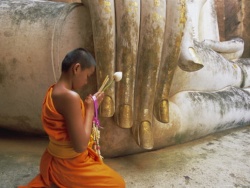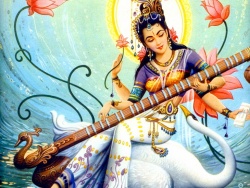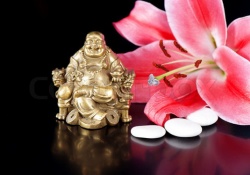No Prophet in Buddhism?
You might well wonder what any normally Tibeto-centric Tibeto-logician would be doing spending his evenings leafing through a — well, not-so-recent — book about a Muslim theologian and Sufi contemplative by the name of Simnani. Wonder no more. For decades now I have been intrigued by the fact that for a time Buddhist teachers called Bakshis were active in the Middle East. We know that Simnani had very much contact with those self-same Bakshis. As I think I will be able to show — if not now, on another day — he was one of the most visible contact points that allowed some aspects of cultural-religious electrical currents to flow into the western parts of Eurasia in a crucial time in her history. Am I being too grandiose? Trying to be dramatic? A little overexcited, no doubt. Forgive me.
It is well known, to a few at least, that in the last part of the 13th century there were certain Kagyü lineages that were allied with the Mongol royal house of Hulegu (reigned 1256-1265) and his immediate successors, receiving their patronage and protection. Hulegu’s son Khaidu (1236-1301) even led (or sent?) western Turk troops — what Tibetans call Stod Hor — into Tibet. Despite a few such Mongolian armed incursions, Tibet was never actually occupied by Mongol forces during China's Yüan dynasty like China was.
From 1256 to 1295, apart from a brief two-year interlude, the Ilkhanid realm was ruled by Buddhists. They held a great deal of the Middle East from their center in Tabriz, in northwestern Iran. I labeled this bad map to show its imprecise location, although you are probably better off to see the map of the Ilkhanid realm (at its greatest extent) at Wikipedia, where you can see that it actually did cover quite a big part of the area you see on the map just below.
Most writers on the subject repeat the idea that there were Tibetan Lamas among the Bakshis. But for years now I’ve been on the lookout for anyone named (let’s say) Jamyang, Kunga or Tenzin among them, and so far no good luck. Although I’ve asked some real experts in the field to look into the matter, they never did get back to me. They may have been right for not taking me seriously. People have always complained that they’re not sure when I’m joking.
Well, there is the surprising story, told in the Berzin Archive, about Emperor Arghun’s brother Gaikhatu who succeeded him as Il Khan. Someone (usually they say, with apparent good reason, this someone must’ve been a Tibetan monk) gave Gaikhatu the 100% Tibetan name Rinchen Dorje.
He liked this Tibetan name well enough to put it, in Mongolian and sometimes in Arabic script, on many of the coins he had minted in Tabriz (you can see quite a few examples on the internet if you look for them). The following lustrous gold example, one of many, is supposed to have his name on it.
He did make one disastrous political mistake. He introduced Chinese paper money into the Middle East. It looks as if he just took the Chinese paper bills and overstamped them. Or did he directly copy the money, Chinese inscriptions and all? Paper doesn’t have half the glitter of gold, and none of the jingle, so it didn’t catch on, to say the least. Exactly the opposite. And Gaikhatu lost his position, so to speak, when he was assassinated. Arghun’s sons soon succeeded Gaikhatu, but they stopped supporting Buddhism and converted to Islam.
Did you ever have one of those minor epiphanies, the kind that seizes you, gives you a kind of electrical jolt, even before you have time to think about the reason? It has happened to me more than a few times in museums, actually, come to think of it. But once when I was touring, together with a Tibetan monk, the al-Quds al-Sharif sanctuaries on what non-Muslims are more likely to know as the Temple Mount, we had scarcely entered the Islamic Museum off to the side of al-Aksa Mosque, when both of us found ourselves astoundedly fixated on the same thing at the same time. It was an artistic motif around the base of a large metal candle holder. It was just so closely similar to the lotus base that you see under practically every Indo-Tibetan divine image, only more in the Tibetan style, or perhaps even more in the style of the Swat Valley bronzes.
The monk and I had identical epiphanies at the very same moment. Stopping to inspect the museum label, we could read that the inscription engraved on it contained the name of Arslan.[1] This touched something off. Some hidden alarm button?
Despite what may have seemed like a moment of clarity, I was puzzled and the more I find out the more puzzling it becomes, really. If this use of the lotus design is a result of Mongol (or just vaguely Central Asian) influence, the reign of this Arslan (1203-1239) is almost too early. He ruled quite a huge area from his capital of Mardin, a still remarkably well preserved historical mountaintop city in southeastern Turkey with a breathtaking view over the Syrian plains. Since that time, I’ve become more accustomed to seeing East and Central Asian artistic influences in Middle Eastern art . There is even a body of literature tracing Ilkhanid eastern artistic influences on early Italian painters like Giotto.
You can’t exactly see it in this low-resolution photo, but if you look in the lower right corner, the scene of the Roman soldiers gambling over possession of the robe, you will see the robe has golden bands in its design, and on the bands are Phagspa letters. I visited the Scrovegni Chapel in Padua a few years ago, but with the 15-minute limit (preceded by an hour in a dessication chamber) it is really very difficult to take it all in, let alone notice all the details. I have to confess I didn’t notice any Phagspa script when I was there. I was far too overwhelmed by the art.
Now Simnani belonged to a family with a number of members who served in the court of Arghun, and Simnani himself was no exception. Yet he had an interest in Sufi meditations from a young age, specifically inspired by Kubra and his school, the Kubrawiya, with its strong emphasis on visionary experiences of lights which Simnani himself would further develop in his later years. Kubra didn’t live to see the rule of the Mongols. It is said he died in hand-to-hand combat with the Mongols when they invaded Khwarezm in 1220.
Now I see the hour is getting late and I want to get this in the mail before I miss my bedtime, so just let me say these few words about Simnani and we will call it a day. As you may know, the Mongols were in the habit of holding inter-religious discussions (debates, if you prefer) in their courts. The general idea is that Mongolians had their own shamanic ideas; other religions they had trouble comprehending — they found them curious — so they would enlist the smartest people around to try to explain them. A number of early Mongol rulers married Christians. Arghun’s mother was one of them, and there are yet other reasons for his willingness to deal with Christians... as well as Muslims, and needless to say Buddhists. I believe Arghun’s Buddhism was not just superficial.
The following describes an event of April 1288. It was probably the first, but definitely not the last, time Buddhist relics were displayed in the Middle East:
- “Buka’s envoys brought back with them to Persia one of the relics so much esteemed among the Buddhists, called Sharil. These are hard pieces of a substance which is said to be found in the ashes of some saintly persons when cremated. Von Hammer says that Buddha's heart was supposed to be made of bone and not of flesh, similarly with the hearts of great men, and that the sharil is really held to be the ossified heart of the cremated person. Arghun, we are told, treated this relic with the greatest honour, gold was strewn over it, while a feast was duly celebrated.”[2]
Arghun sometimes had Simnani hold religious discussions with the Buddhist Bakshis. The usual story is that they belonged to a number of nationalities, not only Tibetans but also Indians, Uighurs, Chinese and so on. They say that Simnani would win these debates because he was able to convince his audience that the Buddhists didn’t really know about their own religion.
- "Arghun then called for a Buddhist monk and ordered him to engage Simnani in a debate, but Simnani defeated the Buddhist by demonstrating that he was ignorant of the true meaning of the Buddha’s teachings."[3]
Although generally antipathetic to Buddhism — he believed the main problem with Buddhism is that it has no prophets — he was actually fond of one particular Bakshi, and this Bakshi (surprise, surprise) has a personal name attached. He was an Indian who was called Bakhshī Parinda (Elias, p. 18).
Parinda was supposed to be from a monastic community of Somnāth in coastal Gujerat, although Mayer believes it may be a similarly-named place in Bengal. I differ with them both. I think this is probably the same monastic institution, in what would nowadays be Orissa, that the famous Vairocanavajra[4] belonged to before he went to Tibet and translated Doha songs into Tibetan in around the 1240’s or so.
Not sure what to make of the name Parinda, I’m inclined to think it might be a reformed version of the Indic name Varendra[5]. Simnani confessed that he regarded Parinda as, to quote Elias, “spiritually very advanced despite his non-Muslim status.”
All this was intended as hardly anything more than an introduction to still different matters, touching on religious devotional and meditative practices and visions that I regard as more interesting than anything you have heard here so far. I do hope you did find it interesting anyway.




